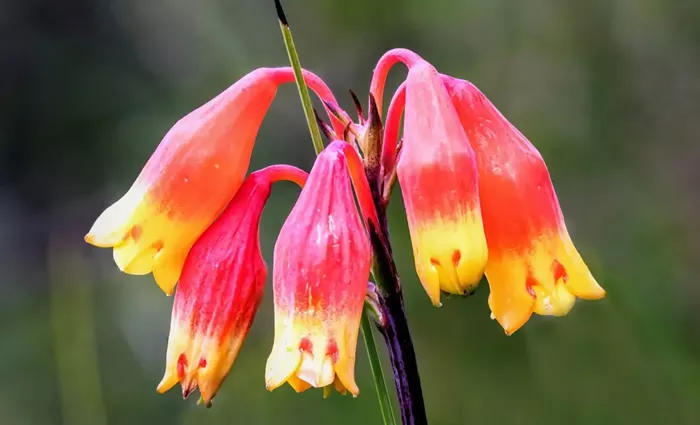A wilting flower might not always signal poor health or neglect. Instead, it could be a natural survival strategy developed over millions of years. Researchers from Macquarie University, along with international collaborators, have uncovered a surprising new behavior in plants: they recycle nutrients from wilting flowers to support future reproduction.
Recycling Resources for Reproduction
According to lead researcher, Honorary Professor Graham Pyke from Macquarie University, this discovery is the first direct evidence that plants can salvage and reuse resources from wilting flowers. These nutrients, which include nitrogen and phosphorus, are not wasted; instead, they are repurposed to help the plant grow and reproduce in future seasons.
“Flowers are not just decorative,” explained Pyke. “They are rich in energy and nutrients, and when they wilt, it doesn’t necessarily mean the end of their usefulness.”
The Study: Christmas Bells
The focus of the three-year study was Blandfordia grandiflora, also known as Christmas bells, a native plant of Eastern Australia. With its bright red and yellow flowers, Christmas bells are especially striking in December.
The research team conducted their study on a plantation in a native wet heath area and a commercial shadehouse where Christmas bells grow prolifically. The scientists manipulated pollination and flower wilting to observe the effects on seed production and reflowering in the following season.
Discovering the Strategy
To their surprise, the researchers found that the plants didn’t immediately use the nutrients from the wilted flowers for short-term reproduction. Instead, the plants stored these nutrients in their underground corms and roots, saving them for the next flowering season.
“Plants recycle energy from one season to support the next. They invest in long-term growth rather than immediate gains,” Pyke said. This process allows the plants to produce new flowering stems in the following year.
Economic Principles of Resource Management
Pyke noted that plant behavior mirrors certain economic principles. “Like humans, plants must decide where to invest their limited resources. If they spend too much in one area, they must cut back in others.”
This concept led Pyke to investigate flower wilting as a mechanism for reallocating resources. While he initially expected the plants to use salvaged nutrients for short-term reproduction, he was surprised to find that they stored these resources for future growth.
More Than Just Wilting
Plants employ various strategies to manage their flowers after reproduction, with wilting being just one of them. For instance, some plants, like jacarandas and frangipanis, shed their flowers before they have a chance to wilt.
Experimental Findings
The research team ran several experiments to confirm their findings. In one test, they compared seed production between plants that were allowed to wilt and those where the petals were removed to prevent wilting. Another experiment halted seed production in all flowers but allowed wilting in one group. The plants with wilting flowers were more likely to reflower in the following season compared to those without wilting.
Factors Affecting Seed Production
The study also identified other factors that influence seed production, such as stem height, the number of flowers, and their position on the plant. Taller stems with more flowers produced more seeds, and the seeds were heavier. However, flowers positioned lower on the plant tended to produce fewer and lighter seeds.
Looking Ahead
This groundbreaking study opens the door for further research into how other plants recycle resources from wilting flowers. The team hopes to learn more about what these salvaged resources are, how plants transport and modify them, and whether the energy spent on creating flowers is outweighed by the benefits of recycling.
“There’s much more to discover,” Pyke concluded. “We’re just beginning to scratch the surface of how plants manage their resources to ensure long-term survival and reproduction.”
This new understanding could have wide-reaching implications for both plant biology and agriculture, offering valuable insights into how plants maximize their energy efficiency.
Related topics:
- Winterize Your Garden: Prepare Plants for Cold Weather with Smith’s Gardentown
- Vibrant Woody Plants That Attract Butterflies and Moths
- Avoiding Orchid Care Mistakes That Can Kill Your Entire Plant


